| Date | Text | |
|---|---|---|
30 Nov 1898

refracting telescope |
refracting telescope (astronomy) The 80 cm refracting telescope is completed at Potsdam Observatory. |
|
30 Nov 1898
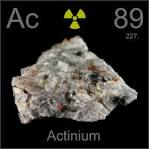
Actinium |
Actinium (chemistry) Actinium is discovered by Andre-Louis Debierne. |
|
30 Nov 1898

International Committee on Atomic Weights |
International Committee on Atomic Weights (chemistry) International Committee on Atomic Weights established. |
|
30 Nov 1898

David Hilbert |
David Hilbert (mathematics) David Hilbert publishes Grundlagen der Geometrie, proposing a formal set, Hilbert's axioms, to replace Euclid's elements. |
|
30 Nov 1898

Georg Alexander Pick |
Georg Alexander Pick (mathematics) Georg Alexander Pick publishes his theorem on the area of simple polygons. |
|
30 Nov 1898

Bubonic plague |
Bubonic plague (medicine) Bubonic plague enters Brazil through the seaport of Santos. |
|
30 Nov 1898

Ernest Rutherford |
Ernest Rutherford (physics) Ernest Rutherford classifies two types of radiation, alpha rays and beta rays. |
|
30 Nov 1898
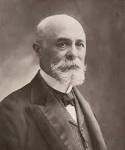
Henri Becquerel |
Henri Becquerel (physics) Henri Becquerel discovers that radiation from uranium consists of charged particles and can be deflected by magnetic fields. |
|
30 Nov 1898

Hertha Ayrton |
Hertha Ayrton (physics) Hertha Ayrton becomes the first woman to read her own paper (on the electric arc) before the Institution of Electrical Engineers in London, of which soon afterwards she is elected the first female member. |
|
30 Nov 1898

Hugo Lenz |
Hugo Lenz (technology) Hugo Lenz first demonstrates Lenz poppet valve gear, for stationary steam engines. |
|
30 Nov 1898
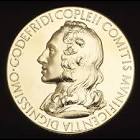
Copley Medal |
Copley Medal (awards) Copley Medal: Lord Rayleigh |
|
30 Nov 1898
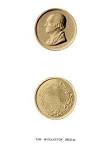
Wollaston Medal for Geology |
Wollaston Medal for Geology (awards) Wollaston Medal for Geology: Charles Lapworth |
|
04 Jan 1899

Henry Alleyne Nicholson |
death Henry Alleyne Nicholson Henry Alleyne Nicholson (born 1844), British palaeontologist and zoologist. |
|
12 Jan 1899

Paul Hermann Müller |
birth Paul Hermann Müller Paul Hermann Müller (died 1965), Swiss chemist, winner of the Nobel Prize in Physiology or Medicine in 1948. |
|
23 Jan 1899

Southern Cross Expedition |
Southern Cross Expedition (exploration) The British Southern Cross Expedition crosses the Antarctic Circle. Later in the year, it first charts Duke of York Island. |
|
24 Jan 1899

Rubber heel |
Rubber heel In 1899, the first U.S. patent for a rubber heel was issued to Humphrey O'Sullivan. His patent described it as a "safety heel" (No. 618,128). |
|
05 Feb 1899
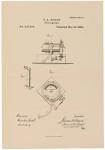
Edison patent |
Edison patent In 1899, Thomas A. Edison was issued a U.S. patent for a "Phonograph Recorder and Reproducer" (No. 397,280). |
|
14 Feb 1899
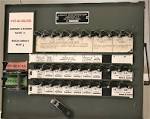
Voting machines |
Voting machines (technology) Voting machines are approved by the U.S. Congress for use in federal elections. |
|
18 Feb 1899

Sophus Lie |
death Sophus Lie Sophus Lie (born 1842), Norwegian mathematician. |
|
27 Feb 1899

Charles Best |
birth Charles Best Born 27 Feb 1899; died 31 Mar 1978 at age 79. Charles Herbert Best was an American-Canadian physiologist who, while 22 years old, assisted Dr Frederick Banting, in Toronto, Canada, with the discovery (1921) of a pancreatic extract - the hormone insulin - that could control diabetes in the dogs they used as test subjects. This led to human diabetics being treated with insulin. Banting (with J.J.R. Macleod) received the 1923 Nobel Prize for Physiology or Medicine. Best was not nominated because he did not receive his medical degree until 1925. However, Banting recognized Best's role by later voluntarily sharing the prize money with him. Best also discovered the vitamin choline and the enzyme histaminase. He was the first to introduce anticoagulants in treatment of thrombosis (blood clots). Best was born in Maine, U.S.A., but for his university studies he moved to Canada, where he remained. |
|
06 Mar 1899

Felix Hoffmann |
Felix Hoffmann (medicine) Felix Hoffmann patents Aspirin and Bayer registers its name as a trademark. |
|
13 Mar 1899

John H. Van Vleck |
birth John H. Van Vleck Born 13 Mar 1899; died 27 Oct 1980 at age 81. John Hasbrouck Van Vleck was an American physicist and mathematician who pioneered in the modern quantum mechanical theory of magnetism, and shared the 1977 Nobel Prize for Physics (with Philip W. Anderson and Sir Nevill F. Mott) for his work on the behaviour of electrons in magnetic, noncrystalline solid materials. In about 1930, he introduced the contribution of the second-order Zeeman effect into the theory of the paramagnetic susceptibility for the ions of the elements samarium and europium, thus bringing calculations into agreement with experimental results. Hans Bethe's theoretical work (c.1929), was extended by Van Vleck to develop the ligand, or crystal, field theory of molecular bonding. He also studied the theory for the nature of the chemical bond, especially as related to its magnetic properties, and contributed to theory of the spectra of free molecules. |
|
14 Mar 1899
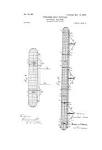
Zeppelin patent |
Zeppelin patent In 1899, Count Ferdinand von Zeppelin was issued a U.S. patent for his invention of his “Navigable Balloon,” the rigid airship, known as the Zeppelin (No. 621,195). The overall cylindrical shape with rounded ends was covered with a cotton shell, framed with aluminium struts, wire-braced and contained a number of independent hydrogen balloons used for lift. Two or more seperate engines were suspended below for propulsion. He had earlier patented it in Germany, 31 Aug 1895, titled, “Lenkbarer Luftfahrzug” (steerable air-cruising train), referred to a feature whereby additional cylindrical mid-segments could be connected together for a longer airship with greater carrying capacity, though none were ever made in this form. He made his first flight with the LZ-1 on 2 Jul 1900 over Lake Constance, Germany. |
|
18 Mar 1899

Othniel Charles Marsh |
death Othniel Charles Marsh Othniel Charles Marsh (born 1831), paleontologist. |
|
30 Mar 1899
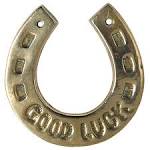
Horseshoe |
Horseshoe In 1899, black American inventor James Ricks was issued a patent for a patent for “Improvements in the Rough-Shoeing of Horses,” which was an overshoe or sleet shoe clamped with a wire band over the ordinary shoe (No.338,781). A V-shaped iron or steel plate was designed with sharpened downward points at the heel and toe ends for traction. At each heel end, projections lapped over the common horseshoe underneath. A screwdriver was used to tighten the screw-threaded bolt and nut on the integral metal band clamp that passed around the heel and a toe loop. Later, he held a patent for a rubber “Overshoe for Horses” (6 Jun 1899, U.S. No. 626,245). |
|
09 Apr 1899

James S. McDonnell |
birth James S. McDonnell Born 9 Apr 1899; died 22 Aug 1980 at age 81. American aircraft manufacturer of aircraft. McDonnell started his first company in 1928, to build the single Doodlebug, but since it found no market, he spent the next 10 years working for several aircraft companies. Then he founded the St. Louis based McDonnell Aircraft Co.on 6 Jul 1939. Among his notable achievements were the production of the U.S. Navy's first carrier based jet fighter (1946), the FM-1; Mercury, America's first manned space craft to orbit the earth (1962), and the F-4 Phantom jet. |
|
13 Apr 1899

Alfred Mosher Butts |
birth Alfred Mosher Butts Born 13 Apr 1899; died 4 Apr 1993 at age 93. American architect, artist, photographer and inventor, who invented the board game Scrabble. He carefully analyzed how often each letter is used (that's how he decided how many of each letter to include and how many points each one would earn), then drew a board and glued letters on some balsa tiles. Originally called Criss Cross (1931), the game, which was based on the crossword puzzle and anagrams, was redesigned, renamed as Scrabble, and marketed by James Brunot in 1948. |
|
28 Apr 1899

Mary Loveless |
birth Mary Loveless Mary Loveless, née Hewitt (died 1991), American immunologist. |
|
01 May 1899

National Trust |
National Trust (biology) The National Trust in the United Kingdom acquires its first part of Wicken Fen, making it the country's oldest wetland nature reserve. |
|
08 May 1899
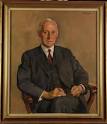
Charles Illingworth |
birth Charles Illingworth Charles Illingworth (died 1991), English surgeon. |
|
15 May 1899

William Hume-Rothery |
birth William Hume-Rothery Born 15 May 1899; died 27 Sep 1968 at age 69. British metallurgist, internationally known for his work on the formation of alloys and intermetallic compounds. During WW II, he supervised many government contracts for work on complex aluminium and magnesium alloys. He established that the microstructure of an alloy depends on the different sizes of the component atoms, the valency electron concentration, and electrochemical differences. Hume-Rothery rules are an empirical guide to when two metals are sufficiently similar to be completely miscible (form a single phase at all relative concentrations). They are: (1). Atomic radii no more than about 15% different. (2). Pure metals have the same crystal structure. (3). Atoms have similar electronegativities. (4). Atoms have the same valence. |
|
07 Jul 1899

Anna Baetjer |
birth Anna Baetjer Anna Baetjer (died 1984), American toxicologist. |
|
26 Jul 1899

Bill Hamilton |
birth Bill Hamilton Bill Hamilton (died 1978), New Zealand mechanical engineer. |
|
09 Aug 1899

Edward Frankland |
death Edward Frankland Edward Frankland (born 1825), English chemist. |
|
16 Aug 1899

Robert Bunsen |
death Robert Bunsen Robert Bunsen (born 1811), German chemist, perfector of the bunsen burner. |
|
23 Aug 1899

Ship-to-shore wireless |
Ship-to-shore wireless In 1899, the first ship-to-shore wireless message to be received in the U.S was: "Sherman is sighted." U.S. Lightship No. 70, San Francisco, announced the arrival of the U.S. Army troopship Sherman to the crowd assembled at the Cliff House. Reporters there from the San Francisco Call, who relayed this information to a city awaiting the return of its hometown regiment from the battlefields of the Spanish-American War. The lightship, miles out at sea in deep fog, relayed this message via wireless telegraphy (later known as radio) through the fog to the Cliff House. This was the first 19th-century working use of wireless telegraphy outside of England. The method was still primitive, using sparks to emit intermittent radio waves and code messages. |
|
03 Sep 1899

Frank Macfarlane Burnet |
birth Frank Macfarlane Burnet Frank Macfarlane Burnet (died 1985), Australian virologist best known for his contributions to immunology, winner of the Nobel Prize in Physiology or Medicine in 1960. |
|
29 Sep 1899
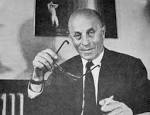
László Bíró |
birth László Bíró László Bíró (died 1985), Hungarian inventor. |
|
02 Oct 1899

London School of Hygiene & Tropical Medicine |
London School of Hygiene & Tropical Medicine (medicine) The London School of Hygiene & Tropical Medicine is established by Patrick Manson at the Albert Dock Seamen's Hospital. |
|
03 Oct 1899
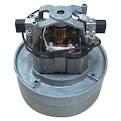
Motor vacuum cleaner |
Motor vacuum cleaner In 1899, the motor-driven vacuum cleaner was patented (U.S. No. 634,042) as a "pneumatic carpet renovator" by John S. Thurman of St. Louis, Mo. Thurman developed a gasoline powered vacuum cleaner and the General Compressed Air Company. In a newspaper advertisement from the St. Louis Dispatch Thurman offered his invention of the horse drawn (which went door to door) vacuum system there in St. Louis. He offered vacuuming services at $4 per visit - a significant amount in that era. By 1906, Thurman was offering built-in central vacuum systems. They actually used compress air, though, and featured no dust collection. |
|
18 Oct 1899

Janet Vaughan |
birth Janet Vaughan Janet Vaughan (died 1993), English physiologist. |
|
27 Oct 1899

Nikolay Dollezhal |
birth Nikolay Dollezhal Nikolay Dollezhal (died 2000), a key figure in Soviet atomic bomb project and chief designer of nuclear reactors. |
|
28 Oct 1899

Ottmar Mergenthaler |
death Ottmar Mergenthaler Ottmar Mergenthaler (born 1854), German American inventor. |
|
08 Nov 1899

New York Zoological Society |
New York Zoological Society (biology) The New York Zoological Society opens the Bronx Zoological Park to the public in New York City under the direction of William Temple Hornaday. |
|
10 Nov 1899

Helen Porter |
birth Helen Porter Helen Porter (died 1987), English plant physiologist. |
|
19 Nov 1899

Sir John William Dawson |
death Sir John William Dawson Died 19 Nov 1899 at age 79 (born 13 Oct 1820). Canadian geologist who made numerous contributions to paleobotany and extended the knowledge of Canadian geology. Dawson was born and raised in Pictou, Nova Scotia, where the many sandstone and coal formations provided fertile ground for his boyhood interest. Often fossil leaves could be found while gathering shale to make slate pencils. Thus, as a boy, he developed an incurable interest in geology and was an avid collector of local fossils. His working life began with mining companies and doing field work. He studied the geology of Nova Scotia, with a particular interest in the fossil forests of the coal-bearing strata. During his early scientific explorations, which culminated in the publication of Acadian Geology, he made many important discoveries of fossil life, great and small. These included fossil plants, trackways of lowly invertebrates, footprints, skeletons of reptiles and amphibians, millipedes and the earliest land snails. Dawson discovered the oldest land plant known at the time, Psilophyton (1859), from Devonian rocks (dating from 408 - 360 million years ago). In Air Breathers of the Coal Period (1863) he described newly discovered fossil animals He had an uncanny ability to understand the ancient environments in which rocks had formed and to decipher their correct ages. Dawson's energetically promoted scientific institutions in Canada, though he opposed Darwin's evolutionary theories. |
|
30 Nov 1899

Aluminium conductor |
Aluminium conductor In 1899, aluminium was first used commercially in the U.S.as an electrical transmission conductor. The Hartford Electric Light Company of Hartford, Connecticut for a transmission to Hartford, Conn. from its waterpower plant at Tariffville, Conn., on Farmington River, at Spoonville, just before Case's Island. The company'a 250-foot concrete dam created a 29 foot head of water which was used to power their hydroelectric plant. The dam powered 2 pairs of 1300-hp water wheels, each connected to a 750-kilowatt generator in a brick powerhouse. The plant opened on Thanksgiving day in 1899 providing electricity from there to Hartford. It was washed away in the flood of 1955. |
|
30 Nov 1899

Andrew J. Moyer |
birth Andrew J. Moyer Born 30 Nov 1899; died 17 Feb 1959 at age 59. Andrew Jackson Moyer was an American microbiologist who invented a method for mass-producing the antibiotic penicillin. While working for the US Agriculture Department laboratory (1940-57), he discovered a technique for antibiotic fermentation using continuous shaking of a culture broth of corn steep liquor (a by-product of the corn starch manufacturing process) and lactose. His method improved on prior methods producing 2 to 8 Oxford units/ml of broth, to in excess of 200 Oxford units/ml. By making possible the large-scale production of penicillin, the process is credited with saving thousands of lives during World War II. Corn steep liquor was adopted for other commercial fermentation processes making many other antibiotics, and the method is still in use today. |
|
02 Dec 1899

new moon |
new moon (astronomy) During the new moon, a near-grand conjunction of the classical planets and several binocular Solar System bodies occur. The Sun, Moon, Mercury, Mars and Saturn are all within 15° of each other, with Venus 5° ahead of this conjunction and Jupiter 15° behind. Accompanying the classical planets in this grand conjunction are Uranus (technically visible unaided in pollution-free skies), Ceres and Pallas. |
|
12 Dec 1899
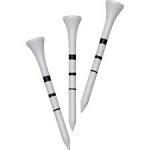
Golf tee |
Golf tee In 1899, an early U.S. patent for a golf tee was issued to African-American, George F. Grant, a dentist of Boston, Mass. (No. 638,920). The design was for a wooden tee with a tapered base and a flexible, tubular, concave shoulder to hold the golf ball. It was designed as "a simple, cheap, and effective tee for use in the game of golf, obviating the use of the usual conical mounds of sand, ... so constructed that it will not in any manner interfere with the swing or 'carry through' of the club in making the stroke." He didn't market his tees, but gave some away. Other styles of golf tees were issued earlier patents in the U.S. and Great Britain (where peg-shaped tees were advertised in golf journals of the 1890s). |
|
25 Dec 1899

Elliott Coues |
death Elliott Coues Died 25 Dec 1899 at age 57 (born 9 Sep 1842). American army surgeon and ornithologist whose Key to North American Birds (1872) was the first work of its kind to present a taxonomic classification of birds according to an artificial key and promoted the systematic study of North American. Beginning the U.S. army as a medical cadet during the Civil War (1862), he became an assistant surgeon (1864-81). His interest in the study of birds began while a boy. He met many naturalists at the Smithsonian Institution and published his first technical paper at age 19. As his army assignments took him to various locations throughout the West, he continued studying the bird life in each new area, and found new species. He also did valuable work in mammalogy and wrote a book, Fur-Bearing Animals (1877). |